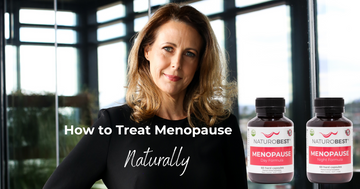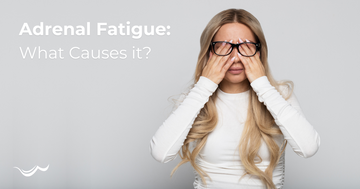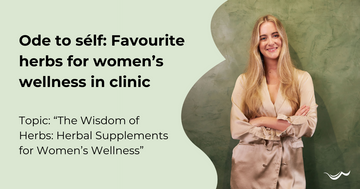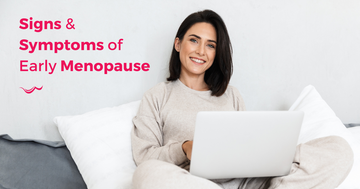
Menopause is one of those events in a woman’s life that can be filled with anxiety and dread. Or embraced as the end of her childbearing years and the beginning of her journey as a wiser, older woman.
In the same way we prepare for a baby by following a preconception care plan, we should prepare for menopause to minimise the impact it can have on our daily lives.
During the perimenopause stage we may notice drier skin or irregular periods that may be lighter or heavier. As well as mood swings and trouble sleeping. This may be accompanied by lower oestrogen levels but not always. It is at this stage when we first notice symptoms, that we take our cue to prepare for the next 5 to 10 years ahead (sometimes longer).
When I first noticed these symptoms myself 6 years ago, I immediately did a day 3 FSH and oestradiol test. This revealed elevated FSH and low oestradiol (a sign of perimenopause). Horrified at the thought of going into an early menopause (I was only 41). I will go into how I increased my oestrogen levels, reduced FSH, delaying the onset of an early menopause, later in this article.
What is menopause?
Menopause is also known as the ‘change of life’ or ‘transition.’ This important and sometimes difficult time in a woman’s life occurs when the ovaries stop producing eggs and monthly periods also stop. Most women experience this between the ages of 45 and 60, with the average age being 51 years.
Menopause has officially been reached when you have had 12 months without having a single period. Once in menopause, the ovaries have essentially stopped making hormones and you can no longer become pregnant. This new stage in life is embraced by many women but others may find it particularly confronting for a variety of reasons.
What is perimenopause?
Perimenopause is the period that links the reproductive childbearing years and menopause. This transitionary period is different for every woman but usually lasts about 5 to 10 years. The hormonal fluctuations in this period of a woman’s life can often lead to uncomfortable symptoms.
Every woman will experience this period differently. Some women will not even notice any symptoms while others may be debilitated, which can deeply affect quality of life. Symptoms can happen all the time or come and go, depending on other contributing factors.
Common symptoms during perimenopause and menopause
Typical symptoms that women may experience during this period include irregular menstrual cycles and mood changes. Other perimenopausal symptoms may include sleep disturbances, hot flushes and night sweats, vaginal and urinary symptoms and muscle and joint pain. Women may also experience headaches and migraine, forgetfulness, lack of self-esteem, fatigue and reduced libido. A women may experience all of these symptoms, or none at all.
The important role of the adrenals during menopause
The adrenal glands have a strong influence on many aspects of our health and wellbeing throughout our life. Let’s face it, daily stress is inevitable. However the health of our adrenal glands can impact our ability to cope and manage stress on a day-to-day basis.
The importance of healthy adrenal function during menopause is commonly overlooked or dismissed. But the key role they play during these years cannot be under-estimated.
During the transition period of menopause, as we know, the ovaries stop producing eggs and decrease their production of reproductive hormones. This includes progesterone and oestrogen. To make up for the lack of sex hormones, a woman’s adrenal glands start to pick up the slack for the ovaries.
The adrenals, like the ovaries, are also able to produce progesterone as well as other precursor hormones to oestrogen and testosterone. Known as DHEA and androstenedione. Up until menopause, the adrenal glands’ role in producing reproductive hormones has always been minimal.
However, the adrenals have a big job throughout our lives. They are also still responsible for the production of the ‘stress hormones’. This includes - cortisol, aldosterone and adrenaline, as well as some other important hormones such as DHEA.
Many women have a huge amount of stress in their lives. The daily juggle of managing family, households and careers can take its toll on the adrenal glands. By the time they get to menopause, the adrenals can be severely depleted. This may result in their in-ability to produce enough hormones to take up the slack for the ovaries.
Additionally, if chronic stress is present during this time. The adrenal glands are still required to produce large amounts of stress hormones. Including cortisol and adrenalin and may not be able to keep up with the demand for the production of sex hormones and their precursors.
This can also lead to an increase in menopausal symptoms experienced. For example, increased production of cortisol can increase core body temperature. This in turn contributes to the development or worsening of hot flushes. You can see that keeping the adrenals healthy is such an important factor in a smoother menopausal transition.
Treating the symptoms of menopause naturally
It is unfortunate that most women will seek help for menopausal symptoms when they are experiencing severe symptoms. This includes hot flushes and night sweats rather than seeking help when they first notice symptoms during the perimenopause stage.
Going back to my own story, I treated myself in the same way I had treated clients in the past. I knew that I immediately had to start taking Chaste Tree to keep my cycle regular and support progesterone levels alongside DHEA to support my adrenals and assist hormone production. DHEA converts into testosterone and testosterone is converted into oestrogen via an enzyme called aromatase.
For me, when I first started taking DHEA (prescribed by my holistic doctor). I experienced a boost in libido, energy and started sleeping better. After taking this bioidentical hormone for a year or so, my FSH declined to normal levels (less than 10) and my oestrogen increased.
To keep my oestrogen levels in check, I started taking herbs to assist oestrogen clearance. Alongside Prometrium (bioidentical progesterone available on prescription) from days 15 to 25 of my cycle.
You could say that the above combination is a type of natural hormone replacement therapy. Speaking from experience, it works. Upon seeing the results of my blood test six years ago, my GP said she expected my periods to stop within the next 5 years.
Six years on, I still have a regular 28-day cycle and it’s my belief that I managed to delay early menopause. By taking bioidentical hormones in combination with herbs. I sleep well with the assistance of sleep herbs, boost memory and concentration with the herbs ginkgo biloba and bacopa. I keep my irritability under control with my “PMS Power Pack” PMS Support & Antioxidant, Stress & Sleep PM Formula, Calcium & Magnesium Plus K2 & D3 and Detox & Liver Support.
When oestrogen levels start to decline, this is usually when menopausal symptoms such as hot flushes and night sweats commence. There are a lot of theories around why some women are more prone to hot flushes than others.
Serotonin is closely linked with oestrogen. That is why one theory behind why SSRI's (anti-depressants) are a successful treatment for hot flushes. The health of the adrenals are another theory linking high stress levels and caffeine consumption with an increased tendency to hot flushes.
As naturopaths and herbalists, we take all of this into consideration when treating someone holistically. The best herbs I have found for supporting serotonin are St John’s Wort and Saffron. There is plenty of clinical evidence behind both herbs.
Rehmannia is my favourite adrenal tonic for during the day for menopausal women. Withania my favourite PM adrenal herb to help combat the effects of stress on the body and reduce cortisol levels.
Hot flushes are accompanied by a sharp rise in luteinising hormone (LH) levels. This is one of the theories behind the prescription of black cohosh which is known to reduce LH levels. Black cohosh is also a selective oestrogen receptor modulator, helping to bind to oestrogen receptors and mimic the effect of oestrogen.
Aside from DHEA to support oestrogen levels, red clover is known to contain isoflavones. An active constituent in the plant that is oestrogenic.
Night sweats can be debilitating. Women have told me that they were so bad their sheets were saturated and they would have to get up in the middle of the night to change them. Sage and zizyphus are renowned herbs to reduce night sweats with the added benefit of zizyphus assisting sleep.
Valerian and hops are well-known herbs to help you drop off to sleep. Hops having the additional benefit of being oestrogenic. If sleep is an issue, I recommend the combination of Stress & Sleep PM Formula one hour before bed, followed by Sleep & OestroSupport PM Formula at bedtime.
Tribulus leaf has been shown to increase DHEA naturally. I have been scouring the globe for this unique raw material for the last 6 years and now I have finally found it! Once you start taking this herb, you can speak to your practitioner about reducing your dose of DHEA or even replacing DHEA with Tribulus leaf which is what I have done since the release of Mood, Memory & Libido Support.
Lifestyle tips for Menopause
Fortunately, there are so many tools we can use to ease the symptoms of menopause. The following simple steps can make a world of difference in managing commonly experienced symptoms:
- Nutritious diet – choose a wide variety of plant foods, whole grains, lean meat, fish or chicken. Include foods rich in phytoestrogens such as soy, tofu, whole grains and legumes. Phytoestrogens may mimic the action of oestrogen in some women which may assist with managing symptoms.
- Regular exercise – to support heart, adrenal and thyroid health. Aim for 30-45 minutes per day and include weight bearing exercises to decrease the risk of osteoporosis. Some studies have suggested that exercise can reduce hot flushes.
- Relaxation and managing stress levels – this may help to improve hot flushes as well as mood and sleep imbalances. Try mindfulness exercises and connecting with nature on a regular basis.
- Prioritising sleep – use light-weight sleepwear and bedding to assist with night sweats. Ensure a dark and cool temperature to promote restful sleep.
- Manage weight – women who are overweight may have more hot flushes than women in a healthy weight range.
- Avoid hot flush triggers such as spicy food, caffeine and alcohol.
- Quit smoking – those who smoke may experience an earlier menopause with increased adverse symptoms.




